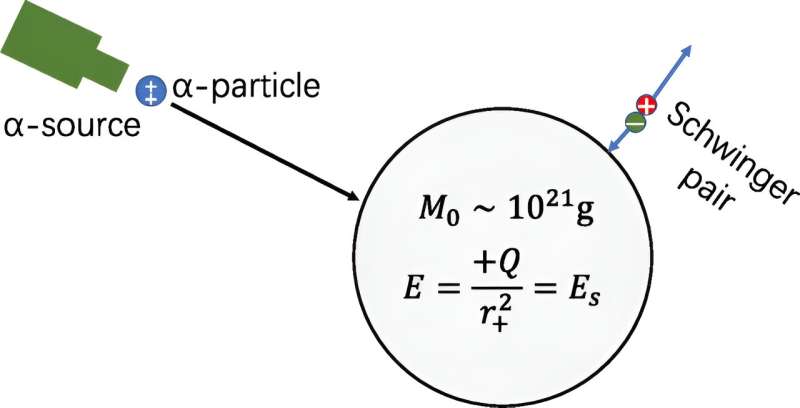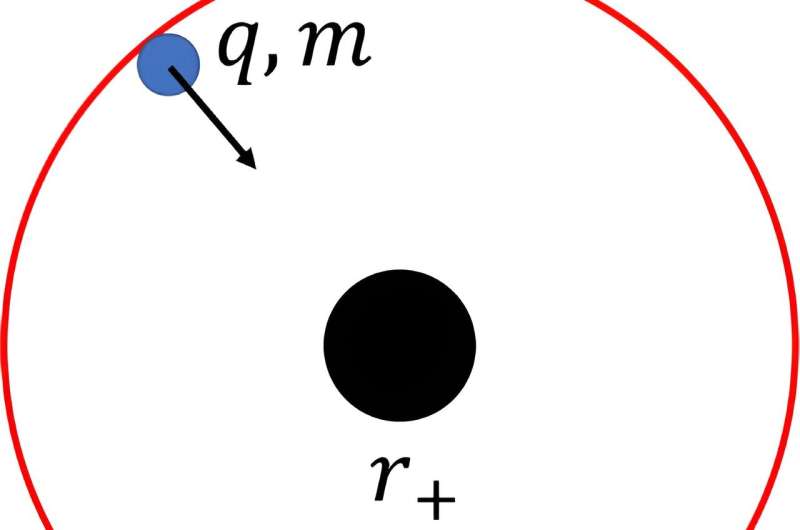December 18, 2023 report
This article has been reviewed according to Science X's editorial process and policies. Editors have highlighted the following attributes while ensuring the content's credibility:
fact-checked
peer-reviewed publication
trusted source
proofread
Two possible ways to use black holes as energy source in the distant future

A pair of astrophysicists at Tianjin University, in China, has proposed ways that humans in the distant future might use black holes as an energy source. In their paper published in the journal Physical Review D, Zhan-Feng Mai and Run-Qiu Yang outline two possible scenarios in which energy could potentially be harvested from primordial black holes.
As scientists continue to look for ways to meet the energy needs of a growing global population, some have begun to look for options that may not have been considered in the past. In this new effort, the researchers consider the possibility of tapping black holes as a way to power human needs of the future by turning them into batteries.
The first option suggests future astro-engineers could "charge" a primordial black hole (a very small black hole with no spin that formed soon after the Big Bang) by feeding it electrically charged particles until the black hole begins to repel them, signaling it is fully charged, like a battery. Energy could then be collected from the black hole through the use of superradiance, whereby some of the electromagnetic or gravitational waves carrying more energy than was fed in are deflected into the black hole, captured first and converted into a usable energy source.

The second possibility would involve retrieving energy stored in the form of particle pairs that form in the presence of an electric field. Prior research has shown that an electric field exists around the event horizon of black holes, some of which are strong enough to create both electrons and positrons. Under such a scenario, the positrons of a fully charged black hole would be ejected and available for collection and use as an energy source.
The researchers do not delve into the physical means involved in harvesting energy from a black hole, or estimate how long it might take to develop the technology to carry out such a difficult task. But they calculate that such engineering could have a recharging efficiency of approximately 25%.
More information: Zhan-Feng Mai et al, Black holes as rechargeable batteries and nuclear reactors, Physical Review D (2023). DOI: 10.1103/PhysRevD.108.104066
Journal information: Physical Review D
© 2023 Science X Network





















